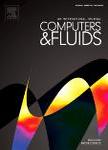版权所有:内蒙古大学图书馆 技术提供:维普资讯• 智图
内蒙古自治区呼和浩特市赛罕区大学西街235号 邮编: 010021

作者机构:NASA Sci & Technol Corp Ames Res Ctr Moffett Field CA 94035 USA Parallel Geometr Algorithms LLC Sunnyvale CA USA US Army CCDC AvMC Technol Dev Directorate TDD Moffett Field CA USA
出 版 物:《COMPUTERS & FLUIDS》 (计算机与流体)
年 卷 期:2020年第200卷第0期
页 面:104429-000页
核心收录:
学科分类:08[工学] 0812[工学-计算机科学与技术(可授工学、理学学位)] 0801[工学-力学(可授工学、理学学位)]
基 金:U.S. Department of Defense HPC Modernization Program Office
主 题:Computational Fluid Dynamics Mesh Generation Computational Geometry
摘 要:Anisotropic prismatic/strand meshes are often used to capture viscous boundary layer effects in Reynolds Averaged Navier Stokes (RANS) simulations of high Reynolds number flows. This paper describes a new algorithm for generation of prismatic meshes using the minimum distance field of the surface tessellation. The algorithm starts with initial point placement using both the direction of best visibility and the direction to the closest point on the minimum distance iso-surface. Initial point placement is followed by a constrained smoothing operation based on an elastic spring analogy. The constraints ensure movement of nodes is restricted to the iso-surface of the distance field and within the region of visibility. Simulations are performed using a dual-mesh infrastructure, where the prismatic meshes transition to a Cartesian background mesh a short distance from the wall. This overset mesh system is processed by a domain connectivity method to establish connections between self-intersecting strand meshes and strand/Cartesian mesh systems. Mesh and flow simulation results are presented for test cases of varying complexity. (C) 2020 Elsevier Ltd. All rights reserved.